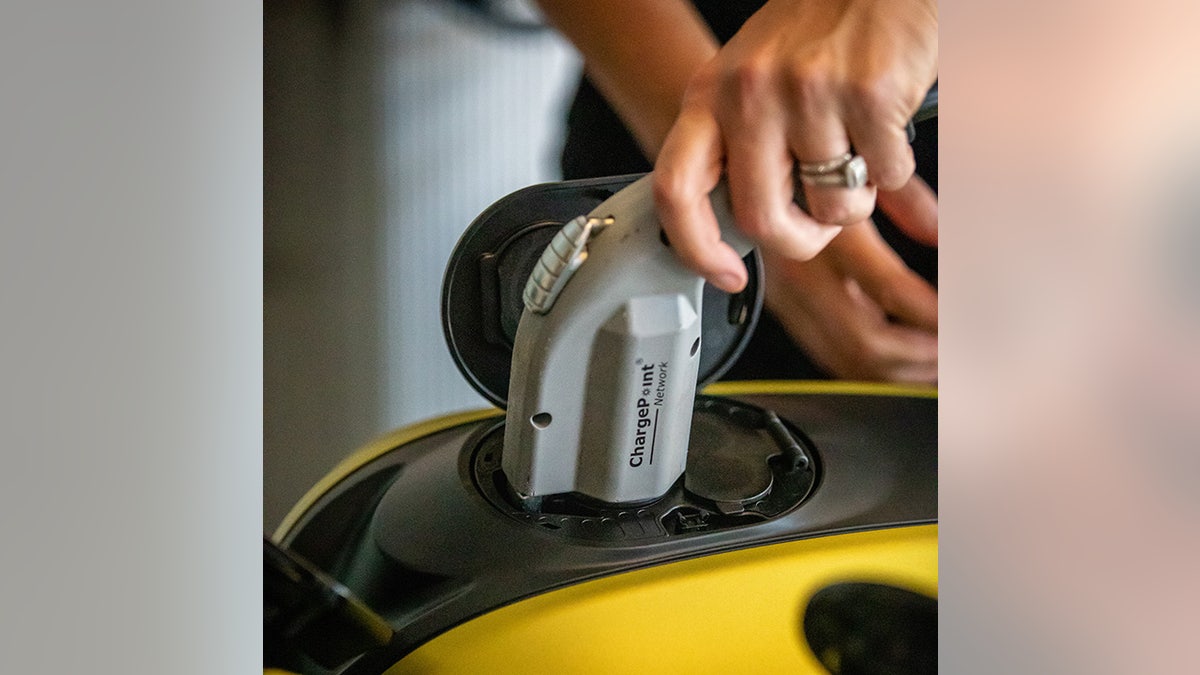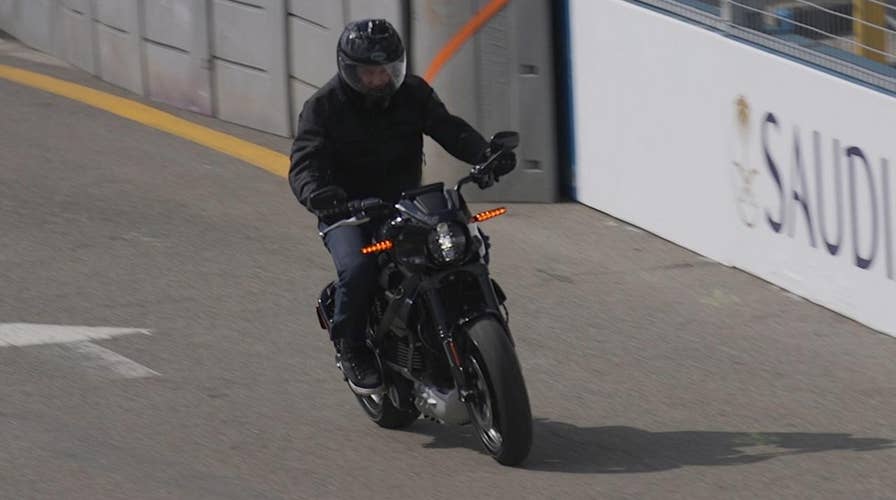2020 Harley-Davidson LiveWire test ride
The LiveWire is one of the first battery-powered bikes from a major motorcycle maker and a dramatic departure for Harley-Davidson. Does it have the stuff to electrify the brand? Fox News Autos editor thew a leg over one to find out.
The LiveWire is the cleanest hog ever.
It’s Harley-Davidson’s first electric motorcycle and one of the first serious attempts by a major manufacturer to offer a battery-powered bike in the U.S., which is a bit shocking considering the brand’s image.

(Harley-Davidson)
But the century-old company is hoping the twenty-first century machine will connect with a young, affluent audience that might not be interested in its conventional models, while also invigorating its traditional owner base.
More than five years in the making, the York, Pennsylvania-assembled LiveWire looks like nothing else Harley-Davidson builds. More a streetfighter than a cruiser, it has modern styling, mid-mounted footpegs, an aluminum frame, adjustable Showa shock absorbers and Brembo high performance brakes.
The 15.5 kilowatt-hour battery pack it uses is where you’d normally find a V-Twin, and the Magneti Marelli-supplied electric motor is tucked underneath it in an attention-getting silver package that also houses the power electronics and a liquid cooling system.

(Harley-Davidson)
There are no loud exhaust pipes, of course, but the transversely-mounted motor and the spiral bevel gear that directs power from it to the drive belt were engineered to create a mild mechanical medley when you twist the accelerator to send up to 105 hp and 86 lb-ft of torque to the rear wheel.
Once you turn the LiveWire on, that’s all you have to do to get going. As with most electric vehicles, it has a single-speed transmission, so there isn’t a clutch or a need to change gears. Harley-Davidson hopes this will further broaden the appeal to new riders. As a reminder that it’s ready to go, the bike gently vibrates like a beating heart when it’s stationary. It’s a neat and useful feature on something ready to accelerate from silent to 60 mph in three seconds.
That’s supercar-quick, and delivers pretty much the same sensation as if you were falling forward. The throttle response – and the engineers still do call it a throttle because old habits die hard – is perfect, unlike the on/off effect some electric bikes – and even some gas ones -- exhibit.
Top speed is electronically limited to 110 mph, but the LiveWire isn’t just about accelerating in a straight line to illegal speeds. To demonstrate this, Harley-Davidson held a test drive event on the temporary Formula E street racing track in Brooklyn, N.Y., which was a serpentine circuit filled with hairpins and tight S-curves. Not exactly the kind of place you’d take a Fat Bob.
At 549 pounds, the LiveWire is a heavy motorcycle for its size, even by electric standards, but it carries the weight well. The battery pack, which uses automotive grade Samsung cylindrical cells, accounts for 40 percent of that total, but the bike’s center of gravity is low and it tucks into turns nicely. Harley-Davidson says it has a maximum lean angle of 45 degrees, which is plenty and will only disappoint the most dedicated knee-scrapers.

(Harley-Davidson)
The extra pounds pay dividends in comfort and help provide a luxurious, pinned down ride over rough surfaces. Four driving modes – Sport, Road, Rain, and Range – are built-in, each with different power, braking and traction control maps, and you can configure three of your own into the digital instrument cluster. The LiveWire even has a feature that does its best to keep the rear tire on the ground when you slam on the brakes. Considering they feel powerful enough to stop the earth from rotating, this seems like a good thing.
In relaxed riding, you hardly need to use them. Ease off the throttle and the electric motor becomes a generator that slows the LiveWire down as it charges the battery. It’s so effective that it will light the brake light under certain circumstances. In the city, this contributes to an official range of 146 miles per charge, which nosedives under 100 miles as you hit the open road. Those aren’t the best figures for an electric motorcycle, but they’re not bad.

(Harley-Davidson)
The LiveWire’s ace in the hole is Level 3 DC Fast charging capability. This allows it to fill its pack to 80 percent in 40 minutes or all the way in an hour at a public station via an input on the "tank" where a gas cap would normally be. At home, it takes about nine hours on a 110-120 volt outlet, which is the same when it’s plugged-in to a 220-240 volt Level 2 charger. Odd.
The price is literally odd, and quite large. The LiveWire starts at $29,799, which is about ten grand more than its most serious competition from Zero Motorcycles, the biggest of the all-electric brands. Harley-Davidson’s marketing folks argue that the LiveWire has the quality to back this up. While first impressions on that point are very good, we will have to wait a while to find out how reliable it is.
They also point to Harley-Davidson’s large dealer network, which has a generally great reputation and plenty of experience selling gas guzzlers for that much and more. About 150 of them have been approved to sell the LiveWire when it launches in September, and more are on the way. As an incentive, every purchase comes with 500 kilowatt-hours of free charging during the first two years on Electrify America’s network of stations, and at least one of its DC fast chargers will be located at each LiveWire-authorized showroom.
The biggest takeaway from riding the LiveWire is that if it didn't have Harley-Davidson name on it, you'd never know who made it. Which may be both a good and bad thing when it hits showrooms. Harley-Davidson won’t predict how many it expects to sell annually, but considering its cost and the infancy of the electric motorcycle segment, hundreds would be impressive. The bike definitely is.
Big sales numbers aren't what it’s about, however. The LiveWire is a showpiece meant to prove what the company is capable of and a preview of what’s to come. Additional, less expensive electric models are in the works, including a scooter aimed at three-year-olds that’s listed at $649.
Talk about going after a younger audience.
